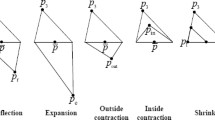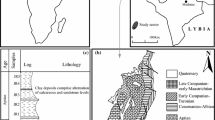Abstract
The effect of plasticizers on the plastic properties of refractory clay mixtures is studied. Optimal concentrations for additions are specified. Applications to the serial production of aluminosilicate materials at the Borovichskii Refractory Kombinat Joint-Stock Co. are reported.
Similar content being viewed by others
REFERENCES
I. S. Kainarskii, Technology of Refractory Materials [in Russian], Metallurgiya, Moscow (1969).
V. Yu. Tretinnik, B. V. Lobanov, Z. S. Krasil'nikova, V. V. Kuz'movich, and V. K. Panas'ko, Improving the Quality of Raw Materials for Ceramics [in Russian], Budivel'nyk, Kiev (1989).
D. A. Fridrikhsberg, A Course in Colloid Chemistry [in Russian], Khimiya, Leningrad (1974).
P. A. Rebinder, General Course in Colloid Chemistry. A Synopsis [in Russian], Moscow State University Publishers, Moscow (1949).
P. A. Rebinder, Surface-Active Substances [in Russian], Znanie, Moscow (1961).
A. A. Abramzon, V. V. Bocharov, and G. M. Gaev, Surface-Active Substances. Handbook [in Russian], Khimiya, Leningrad (1979).
B. V. Volkonskii and L. G. Sudakas (eds.), Cement Chemistry. Handbook [in Russian], Stroiizdat, Leningrad (1980).
R. Milents, “Use of surface-active substances in the fabrication of castables, ” in: Proceedings of the 5th Int. Congr. on Cement Chemistry, Part IV [in Russian], Stroiizdat, Moscow (1973), pp. 388-402.
S. M. Royak and G. S. Royak, Castables for Special Applications [in Russian], Stroiizdat, Moscow (1983).
H. M. Diz and B. Rand, “The mechanism of deflocculation of kaolinite by polyanions, ” Br. Ceram. Trans. J., 89(3), 77-82 (1990).
I. G. Kovzun, F. D. Ovcharenko, I. T. Protsenko, and V. A. Obozhin “An addition for controlling the viscosity of a clay-based slip, USSR Inventor's Certificate No. 1072395, Applied 28 May, 1980, ” Byull. Izobr., No. 4 (1991).
S. R. Zamyatin, N. Zh. Garaeva, L. N. Tenegina, and M. A. Martyushev, “Plastic properties of addition-modified refractory mixtures, ” in: Refractory Castables. All-Russia Institute for Refractory Materials [in Russian], Metallurgiya, Moscow (1991), pp. 31-38.
”The use of polyphosphates as deflocculants for aluminum oxide suspensions, ” Ref. Zh. Khim., 19M, No. 21, 21M109 (1994).
”A new manufacturing process for clay-cement hollow bricks, ” Tile Bricks Int., 9(3), 157-158 (1995).
S. L. Akhnazarova and V. V. Kafarov, Design Optimization in Chemistry and Chemical Engineering [in Russian], Vysshaya Shkola, Moscow (1978).
Author information
Authors and Affiliations
Rights and permissions
About this article
Cite this article
Suvorov, S.A., Skurikhin, V.V. Optimizing the Plastic Properties of Binding Clays with Use of a Simplex-Lattice Method of Experimental Design. Refractories and Industrial Ceramics 43, 310–313 (2002). https://doi.org/10.1023/A:1022394701467
Issue Date:
DOI: https://doi.org/10.1023/A:1022394701467




